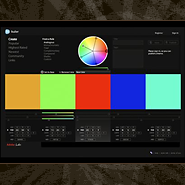 Like every photographer out there, you have website. By now, you’ve made the design decisions that give your site its “look and feel.” The two most important considerations you may not have given much thought to are, one, your site’s visibility in Google and Yahoo! search results; and two, your website’s usability. In this article we’ll focus on the usability aspect of website design.
Like every photographer out there, you have website. By now, you’ve made the design decisions that give your site its “look and feel.” The two most important considerations you may not have given much thought to are, one, your site’s visibility in Google and Yahoo! search results; and two, your website’s usability. In this article we’ll focus on the usability aspect of website design.
Listed below are a few items to consider when either designing your new site or redesigning your existing site:
Communicate Your Message Clearly
Today’s photographic buyers and art directors allocate minimal time to initial website visits, they’re primary goal is to locate a photographer (or two, or three) that “fits the job.” So you must quickly convince them that spending some time on your website is worthwhile.
Provide Information Your Potential Client Wants
Photo buyers must be able to easily (and quickly) determine whether your sample images and capabilities meet their needs and why they should do business with you. What is it that you can offer that your competitors do not? What differentiates you from the other photographers they’re considering? Is it your style? Your experience? Get your message out right up front, or make it easy for them to get to this sort of information within your site.
Offer Intuitive, Simple Navigation and Pleasing, Consistent Page Design
Remember your reader. He or she will learn the “flow” of your web site if you provide consistent, predictable navigation methods and content that shares design elements from page to page throughout the site. Provide “quick links” that serve as easily accessed shortcuts to the paths that you believe people will want to follow most often, such as your portfolios. Don’t bury important links in body copy. And be sure to use a pleasing color palette. If you aren’t familiar with Adobe Labs’ Kuler initiative, here’s an online article about it from Communication Arts magazine.
Equally important, don’t have links that only appear when a portion of a photograph is rolled over with a mouse. Studies have shown that a person arriving at your website from a search engine query will click the ‘back’ button if they don’t find what they came for after seven seconds.
Content, Content, Content
I can’t stress it enough. We all show pictures on our websites. Don’t forget to “introduce yourself” to your website visitor. Share some personal information with him or her. These days we’re getting less and less “face time” with potential clients, so you need to let your website do your selling. We all shoot great pictures. Here’s a few things you could write about on your site: your working style, your clients (don’t go overboard
here), your experience, what it is you do when you’re not working. Maybe your last great assignment; here’s where a blog can be a useful tool, but only if it matches the “look and feel” of the rest of your site. And today, more and more photographers are including some sort of “behind the scenes video” on their sites.
Hopefully these thoughts will get you thinking about your internet presence. Look at other photographer’s sites and put yourself in the position of a first time visitor. What is it you like, or don’t, about the site? Was it easy to move around in? Was your experience a good one? Or did the site’s flash animation require you to roll over the beautiful model’s eye for the “Portfolio” link? You get the idea, now go work on your studio’s website!
A version of this article first appeared in ASMP’s Professional Business Practices in Photography, (Seventh Edition).
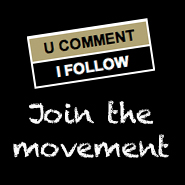 Most SEO experts agree on at least one thing: incoming links to your web pagees are very important when it comes to determining where your page will appear in the search engine listings. An impediment to getting these valuable links is that, by default, most blog platforms are set up so that a “Do Not Enter” sign is added wherever a link appears in a comment. This means that search engines will not “count” the link as they are crawling the internet. In geek-speak this is known as a “no-follow”, originally designed to help stop comment spam. With today’s ease of comment moderation by blog owners it’s really not needed. In fact, what it actually does is remove some of the incentive for your readers to contribute the blogging community by commenting on your posts.
Most SEO experts agree on at least one thing: incoming links to your web pagees are very important when it comes to determining where your page will appear in the search engine listings. An impediment to getting these valuable links is that, by default, most blog platforms are set up so that a “Do Not Enter” sign is added wherever a link appears in a comment. This means that search engines will not “count” the link as they are crawling the internet. In geek-speak this is known as a “no-follow”, originally designed to help stop comment spam. With today’s ease of comment moderation by blog owners it’s really not needed. In fact, what it actually does is remove some of the incentive for your readers to contribute the blogging community by commenting on your posts.
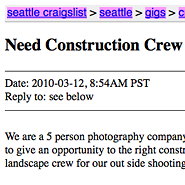 We’re all pretty tired of being asked to shoot on spec, shoot for a low fee with the promise of more work, and that sort of nonsense. These two ads appeared on the Seattle Craigslist over the past two days. I think you’ll enjoy reading…
We’re all pretty tired of being asked to shoot on spec, shoot for a low fee with the promise of more work, and that sort of nonsense. These two ads appeared on the Seattle Craigslist over the past two days. I think you’ll enjoy reading…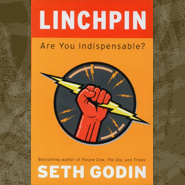 OK, I admit it, I have a Kindle and
OK, I admit it, I have a Kindle and  I’m really looking forward to getting out to Las Vegas this coming week for the 2010 Convention and Trade Show at the MGM Convention Center March 4-11. It’s always a huge gathering of photographers from around the world, with a great lineup of speakers, this year including me!
I’m really looking forward to getting out to Las Vegas this coming week for the 2010 Convention and Trade Show at the MGM Convention Center March 4-11. It’s always a huge gathering of photographers from around the world, with a great lineup of speakers, this year including me!  Like every photographer out there, you have website. By now, you’ve made the design decisions that give your site its “look and feel.” The two most important considerations you may not have given much thought to are, one, your site’s visibility in
Like every photographer out there, you have website. By now, you’ve made the design decisions that give your site its “look and feel.” The two most important considerations you may not have given much thought to are, one, your site’s visibility in 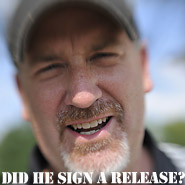 Many photographers forget that their websites are a form of advertising and as such the individuals in the images must be released. Put another way, if your website is used to attract potential clients or customers, it is a commercial advertising vehicle. Your use of the likeness of any person on your website would likely be deemed an advertising use, and might violate right of privacy/publicity laws.
Many photographers forget that their websites are a form of advertising and as such the individuals in the images must be released. Put another way, if your website is used to attract potential clients or customers, it is a commercial advertising vehicle. Your use of the likeness of any person on your website would likely be deemed an advertising use, and might violate right of privacy/publicity laws.  There was a recent post in one of the professional-photographer-type forums by Nashville shooter David Bean about “behind the scenes video” that a lot of photographers are starting to feature on their websites. He provided a link,
There was a recent post in one of the professional-photographer-type forums by Nashville shooter David Bean about “behind the scenes video” that a lot of photographers are starting to feature on their websites. He provided a link,  Generally speaking, it’s difficult to optimize a website for multiple search engines. This is because each engine utilizes its own, top-secret, proprietary search algorithm. Almost everyone knows that Google is the number one search engine followed by Yahoo! Search, and then Bing. (72 percent, 15 percent and 9 percent respectively for the four weeks ended January 2, 2010. Source:
Generally speaking, it’s difficult to optimize a website for multiple search engines. This is because each engine utilizes its own, top-secret, proprietary search algorithm. Almost everyone knows that Google is the number one search engine followed by Yahoo! Search, and then Bing. (72 percent, 15 percent and 9 percent respectively for the four weeks ended January 2, 2010. Source:  groozi.com is a blog about negotiating and web marketing. Weekly posts are written primarily by me, Blake J. Discher, a
groozi.com is a blog about negotiating and web marketing. Weekly posts are written primarily by me, Blake J. Discher, a 
